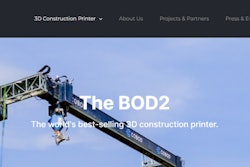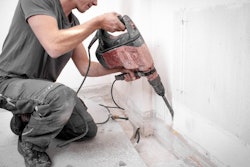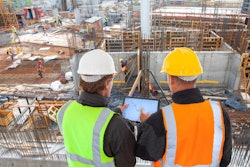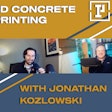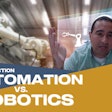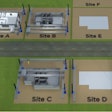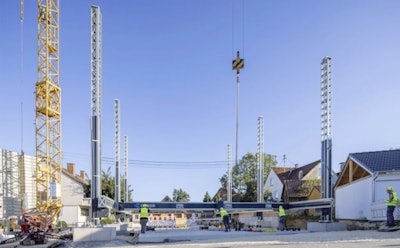
While a number of startups have set out to use their own proprietary 3D concrete printing technologies directly in their own projects, which are usually residential, some are focusing on offering capital equipment to the construction market. Of these, COBOD is perhaps the market leader in terms of units sold.
The industry has a long way to go when it comes to 3D concrete printers becoming a common site on project sites or a typical way to deliver many types of construction, despite the cost, speed and quality attributes of the structures themselves. Local building codes, market preferences and the degree of change the industry would need to go through are all substantial sources of friction for broad market acceptance. So, navigating the waters of this emerging market, where demand will be hard to predict, will be difficult. COBOD International, from its headquarters in Copenhagen, is attracting dollars not just from venture capital which could be constrained during a recession. COBOD has drawn investment from not just these financial backers, but more strategic partners who are in it for the long haul. These include CEMEX Ventures which announced an investment in July of 2022 and GE Renewable Energy that announced they had taken a minority stake in Cobod in May of the same year.
But even before this, in June of 2020 ForConstructionPros published on update on how COBOD was engaged in a project with GE Renewable Energy and LafargeHolcim to create “wind turbines with optimized 3D printed concrete bases, reaching record heights up to 200 m (656 ft.). According to a GE blog post about the collaboration, this makes more logistical sense than the way towers for wind turbines are currently constructed. Towers are traditionally constructed by trucking prefabricated steel tubes onto the site where they are welded together, which places limits on how wide the tower pedestals can be. Printing the base of the tower on-site eliminates that constraint and brings a number of other advantages as well.
LafargeHolcim developed a custom mix for the project, but on its production machines, COBOD distinguishes itself from many of their competitors by relying on an easily available, non-proprietary mix. This, and other details revealed in an April 2022 IronPros debriefing with COBOD CMO Philip Moustgaard Knudsen, paints a picture of a company intelligently pursuing the early edge cases where 3D concrete printing can be immediately viable.
“We have heard of companies using 3D printing for homebuilding,” Knudsen said. “COBOD’s approach can help drive 3D concrete printing to market faster and help the industry adopt it at scale.”
Apart from marketing equipment rather than projects, COBOD’s approach is distinguished by its early focus not necessarily on residential but use cases with its partner GE where owner preferences and regulatory approvals are less imposing obstacles. They go to market through a partnership with PERI Group, the manufacturer and supplier of formwork, scaffolding and civil engineering solutions. Peri has also launched a division for 3D concrete printing, which went on to construct the first 3D printed home in Germany and the biggest 3D printed apartment building in Europe.
“They are our biggest distributor—and they are our minority owner,” Knudsen said. “They have done really well, and we already have many buildings 3D printed in Europe. We are the world leader having sold around 15 printers in the United States and about 50 in total. This despite the fact that we have only existed for a few years. We have of course sold far more printers than delivered—we have a delivery timeline of four months, which is creeping up due to demand.”
Knudsen was comfortable that the supply chain for components and materials to manufacture their printers seemed stable but lead times could still increase just because of volume of orders. One supply chain that is wide open for COBOD customers though is the one for raw materials. Competitors like ICON are developing proprietary formulas to work with their machines.
“We are pretty flexible—basically saying we are selling a printer that can print all sorts of stuff, but most companies in this business are printing Ready-Mix with granulars that are pretty small and easy to push through the hose and the printing nozzle,” Knudsen said. “We are first in the world to print real concrete. Our mix has larger granules but based on the experience we have now, we are able to make this work. Concrete is the solution we are recommending, and our customers can use 99 percent locally sourced material. Maybe in Hawaii, there is no ready-mix, but you can source basic concrete ingredients and use a 1 percent additive from Cemex. This enables our customers to adjust to different preferences based on their region of the world.”
Other sources of friction in the market like the need to get individual projects approved and the continuing evolution of the unified commercial code to accommodate 3D concrete printed structures COBOD is less involved with.
“We are supporting these efforts as much as we can,” Knudsen said. “We do have central architect resources, but are not specialized in local legislation, but our goal is to support our customers around the world. In Oman, we printed a new concrete building, and they are also looking at the local building legislation. Often, you do not need the metal reinforcement if you just do one story residential buildings. But in many cases, the local or national legislation is not up to date. But we support our local customers as much as we can and to testing with them as well.”
While the COBOD website lists a New York City office, the company is also in the process of hanging a more substantive shingle in North America. The location is not confirmed yet, but will likely be in the southern states, where the construction season is longest, and demand is high.
“We are establishing our local office in the U.S. as well—which is important because the U.S. is our focus,” Knudsen said. “Americans are taking new technologies into the market faster, and contractors there have a different risk profile than we see in Europe and the rest of the world.”
A Configurable Product
Apart from strong global distribution and a tactical approach to pursuing project types that can be executed as 3D printed structures reach regulatory and market acceptance, COBOD distinguishes itself on product as well. Their BOD2 modular truss design adapts to projects of different sizes and configurations. The design of the tangential steel nozzle also gives contractors enhanced control over the surface texture of the projects by allowing for smoothing or texturing of the wall as it prints.
COBOD also markets its COBOD Mini Batch Plant, which is part of the secret sauce that enables their customers to print with actual concrete. The batch plant is digitally integrated with the COBOD Concrete piston pump and Round Big-Bag Silo. This pump automatically discharges material when the printhead is about to run out of material.
“At COBOD, we have a modular system, with robotic arm that later be adapted to use additional technologies,” Knudsen said. “If you buy a Tesla, it is old technology in two to three years. That will not happen to COBOD. You can hook up to any technology we develop in the future—with the robotic arm, different gantry systems or open-source technology, you will be a part of that journey with us.”
The BOD2 relies on two cameras mounted on the printhead for live monitoring of the print. Firmware that accompanies the printer converts CAD files to 3D printable files, and sensor mapping compensates for slabs that are not entirely even. Users get a web interface to control the print.
“Our competitors also focus on residential and that is not the case for us,” Knudsen said. “We are very interested and spent a lot of energy with General Electric. Over the last couple of years, we have done research and development together on printing wind turbine pedestals. That is a whole area that has a lot of our attention. The advantages of 3D construction printing may be even greater in industrial and commercial sectors. Small and one-story 3D concrete printing is easy—but if you have an even bigger printer, you can do pretty big industrial applications. It also helps set us apart that we don’t just do mortar like (competitors) Icon and Black Buffalo 3D. Concrete is cheaper, and it has a lower CO2 footprint.”
Market and Pricing
While the focus in terms of project size and type and the characteristics of the BOD2 printer are differentiators, COBOD still must contend with other 3D printer manufacturers in sales cycles.
“We run into Black Buffalo 3D, and we monitor what they do,” Knudsen said. “We had a previous partnership with Alquist 3D—and they are on our radar. We are distinguished by our know-how; through all the printers we have sold and projects we have done in different project types and sizes.”
The type of company that purchases 3D concrete printers from COBOD varies.
“We have every type of possible company, including a crypto miner thinking he can find a niche,” Knudsen said. but in most cases, in the US, it varies a lot by country, but in the U.S., you typically have a house builder that has found a plot where he will test and build the first house and maybe has an agreement to do a community—as little as 50 or up to 450 houses. And then of course they are testing on that first plot.”
COBOD takes a high touch approach to ensuring customer success, bringing new owners to their headquarters in Copenhagen to train them and also visiting the installation site to assist on the first print.
COBOD2 owners also get access to COBOD’s 24-7 service and support team, including a dedicated team in the United States. The strong distribution play COBOD has in place also helps shore up customer success.
“Our distributors may take part in our training and work with customers on site,” Knudsen said. “Peri Group has some very deep knowledge of our technology and lots of experience. But we have not had one project where we have not been involved. There are new distributors with less experience than Peri, but if you are going to be a distributor you have to buy a printer. It is not like just being a sales agent. The market is new, and it is hard to know what our standard approach will be.”
Competitors include Black Buffalo 3D East Stroudsburg, Pa.-based Black Buffalo 3D, which was at the time of our last briefing still ramping up distribution, while Knudsen implied COBOD was not prioritizing new distributors. Also looking for new distributors is Midvale, Utah-based MudBots. Their printers range from 15-foot by 15-foot by 10-foot high to 100-foot by 50-foot by 10-foot high. COBOD also encounters Austin, Texas-based ICON Technology.
“ICON has a different model than we have, they are selling to end users and we are selling to business—house builders, universities, material suppliers who are the first movers in this market,” Knudsen said.
“Sometimes, they sell direct depending on where the prospect is located. This gives us the advantage as a player to expand globally faster than they do. We can focus our energy on developing the 3D printer, the software and the close relationship with the materials suppliers.”
ICON also relies on a proprietary mix they call Lavacrete which is required to run their Magma portable cement factory and Vulcan 3D concrete printer.
Black Buffalo 3D’s printing technology, meanwhile, uses a proprietary cement-based ink that cures to over 7,000 PSI in 14 days. Mapei will distribute the product in the Americas, but because Black Buffalo 3D owns the intellectual property, they will be able to license ink manufacture in regions of the world Mapei may not have distribution.
The material and printing method were certified under ICC AC 509 in 2020 for wall heights of up to eight feet, and then Black Buffalo worked with ICC to revise the standard to allow for multi-story printing to meet their maximum print height of four stories and future proof the standard.
How much do COBOD and other 3D concrete printers cost? About $500,000, but the way a customer pays, and the availability of creative financing and leasing can help contractors commit without fear of loss as the ability to practically use the printers on projects are dealt with. Black Buffalo 3D has a leasing program, for instance, to ease adoption because contractors can test the technology and find a way forward.
“The leasing is not something we do,” Knudsen said. “Now, the Danish government also has available loans where you only need to bring 15 percent up front, rather than 50 percent. But leasing is something we should get more into and have done some testing on.”
BOTTOM LINE: COBOD is selling product into a market at the very early stages of development, and have a flexible product offering, strong distribution and a tactical approach that puts them into infrastructure rather than residential construction. As they advance their leasing offerings that enable contractors to mitigate risk and move the 3D concrete printer off CAPEX and onto OPEX, they will have an additional advantage in the North American market. One reason 3D concrete printers are coming to market in many cases through residential construction organizations that use their own technology on their own projects is that it is hard to secure patents for the intellectual property that constitutes the printer design. Using their own equipment on projects may give these inventors a way to generate revenue until they feel their IP is protected. COBOD has some unique advancements in their product stack but are relying more on their ability to come to market through major corporate partner/stakeholders and establish a toehold in this nascent market.
